
February 17, 2022
Strategy, Fantasy, Internet, LAN, Multiplayer, RTS, Singleplayer, War Strategy, Turn-based, Warhammer.
The third and final part of the Total War series sub-cycle based on the Warhammer license. Total War: Warhammer III introduces, among others, the Kislev and Cathay factions, which take part in even greater battles than before.
Gamepressure
OpenCritic
Steam
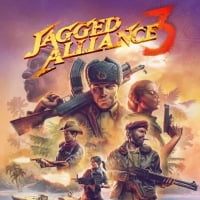
July 14, 2023
Strategy, RPG Elements, Internet, Co-op, Multiplayer, Singleplayer, Tactics, Turn-based.
The third main installment in an iconic series of turn-based strategy games. Jagged Alliance 3 is set in a fictional nation of Grand Chien, where a squad of mercenaries must find the missing president and restore order.
Gamepressure
Steam
Users
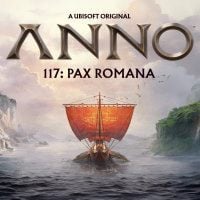
November 12, 2025
Strategy, City Builder, Economic, Historical, Multiplayer, Singleplayer, Ancient History, Ancient Rome.
The eighth main installment in Ubisoft's series of historical economic strategies. Anno 117: Pax Romana takes us to the times of the Roman Empire. We may choose to play as a governor of either Latium or Albion, focusing on developing the land and taking care of the needs of our subjects.
OpenCritic
Steam

April 16, 2019
Strategy, City Builder, Economic, Internet, Colonization, Multiplayer, PS Plus Extra, PS Plus Premium, Singleplayer, Xbox Game Pass Premium, Xbox Game Pass Ultimate, 19th Century, PC Game Pass.
Another installment in the popular economic strategy game series published by Ubisoft and developed since 2011 by Blue Byte Software - Ubisoft's subsidiary studio known for working on The Settlers series. Like the previous installments in the Anno series, set across various centuries of human history, in Anno 1800, the player assumes the role of a steward tasked with establishing a prosperous metropolis. One begins with a minor settlement inhabited by a handful of subjects, who have to gather resources, erect new buildings, and create complex trade relations allowing for the fast development of the city infrastructure. During the game, the player also has to tend to the needs of the settlers and properly balance the budget, which at times of crisis can be patched up with trading the goods and increasing taxes. Diplomacy is also an important aspect of the game, as it allows the player to establish various relations, enter alliances, and wage wars with the neighboring states.
OpenCritic
Steam
Users
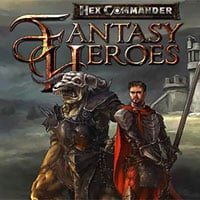
October 15, 2017
Strategy, Fantasy, Indie Games, Internet, Multiplayer, Polish, Singleplayer, Turn-based, Free-to-play.
Hex Commander: Fantasy Heroes is a turn-based strategy game developed by Home net Games. It takes place in a fantasy world inhabited by humans, elves, orcs and other races. The player assumes the role of a general of an army of one of the five races. He or she participates in battles, develops a base and tries to gain advantage over the remaining armies.
Steam
Users

June 18, 2019
Strategy, Indie Games, RTS, Singleplayer, Steampunk, Survival, Zombie.
They Are Billions is a steampunk real-time strategy where we have to defend a human colony from hordes of zombies. It was developed by Numantian Games, creators of Lords of Xulmia: A Story of Gods and Humans. Our primary objective is to manage and upgrade our base. We will have to gather resources, build and upgrade buildings, create a power grid, and so on. Hordes of zombies are a constant threat that we will face. The game's engine allows the presence of up to 20 thousand zombies at a time. We have to build defensive structures like watch towers and walls and recruit and trained mercenaries in order to keep our survivors safe. We can pause the game at any time to give orders. They Are Billions offers a single player campaign with all kinds of missions and a survival mode where we end up on a procedurally generated map and have to survive for 100 days.
Steam
Users

September 15, 2021, Early Access
Strategy, City Builder, Economic, Indie Games, Polish, Sandbox, Singleplayer, Survival, Animals.
Timberborn is a Polish economic strategy from the genre of city builders with survival elements, in which our goal is to create a thriving town inhabited by beavers. The game was developed by Mechanistry studio.
Steam

November 4, 2025
Strategy, Economic, Grand Strategy, Historical, Internet, Co-op, Multiplayer, Singleplayer, War Strategy.
The fifth main installment of the best-selling grand strategy series from Paradox Interactive. Europa Universalis V brings a lot of improvements and new features compared to EU4, including expanded diplomacy, more advanced economy, as well as changes to military and logistics.
OpenCritic
Steam
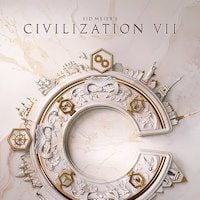
February 11, 2025
Strategy, 4X, Economic, Internet, Multiplayer, Sandbox, Singleplayer, Turn-based.
Sid Meier’s Civilization VII is the seventh installment in the iconic series of 4X turn-based strategies, focused on leading a civilization through years of development. One of the main features in Civ7 is the civilization collapse, forcing us to change to a new one during the campaign.
Gamepressure
OpenCritic
Steam
Users
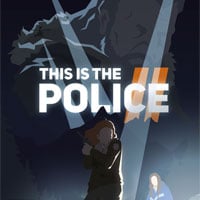
July 31, 2018
Strategy, Adventure Elements, Simulation Elements, Gangster, Indie Games, Police, Singleplayer, Tactics, Turn-based, Isometric View.
A sequel to This is the Police. The game was developed by the creators of the original title, Weappy Studio. Similarly to its predecessor, the game combines traits of adventure games and strategy games. In This is the Police 2 the players assume the role of Lilly Reed – a female sheriff who tries to bring order to the small city of Sharpwood.
OpenCritic
Steam
Users
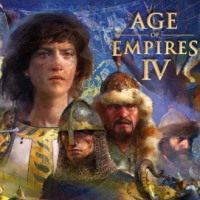
October 28, 2021
Strategy, Economic, Historical, Internet, Multiplayer, RTS, Singleplayer, The Middle Ages, Xbox Game Pass Premium, Xbox Game Pass Ultimate, PC Game Pass.
The fourth full-fledged installment in the famous series of real-time strategy games. The saga is considered as one of the most important in the history of the genre. Contrary to previous games in the series, which were developed by the now defunct Ensemble Studios, Age of Empires IV was developed by Relic Entertainment, a studio that created series like Company of Heroes and Warhammer 40,000: Dawn of War. The mechanics of Age of Empires IV are faithful to its predecessors. The player takes control of one of several civilizations (including European, Asian and Arab nations) and leads it through subsequent phases of evolution. During the game, the player is gathering resources, constructing new buildings and creating powerful armies. In addition to single player mode, the title features an advanced multiplayer mode that enables the player to face other commanders from across the world.
Gamepressure
OpenCritic
Steam
Users
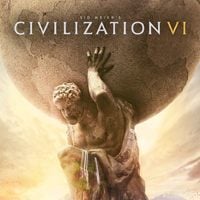
October 21, 2016
Strategy, 4X, Economic, Hotseat, Internet, Multiplayer, Sandbox, Singleplayer, War Strategy, Turn-based, Isometric View.
The sixth installment of the legendary series of turn-based strategy games that allow us to control a selected civilization throughout several thousand years of its history. It was traditionally developed by Firaxis Games led by Sid Meier, the franchise’s creator, himself. Gameplay-wise, Civilization VI combines together the well-proven solutions of its predecessors but also introduces several revolutionary changes. The most important one is the city development. Metropolises can now span across more than one field and consist of four kinds of districts: industrial, scientific, trading, and military. The technology development system was also modified, so that every invention offers an additional mini-quest that provides a useful bonus. Significant changes were also introduced in diplomacy, and the combat mechanics now somewhat mitigate the restrictions introduced by the fifth installment of the series. The game traditionally features an extensive and fully configurable multiplayer mode.
Gamepressure
OpenCritic
Steam
Users
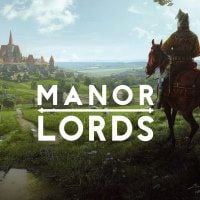
April 26, 2024, Early Access
Strategy, City Builder, Economic, Indie Games, Polish, RTS, Singleplayer, The Middle Ages, Xbox Game Pass Ultimate, PC Game Pass.
Manor Lords is a Polish medieval strategy game, tasking us with building settlements and leading troops in combat. It was created by an indie developer Slavic Magic. We have a freedom of placing buildings on our land and we can observe the action from many cameras.
OpenCritic
Steam
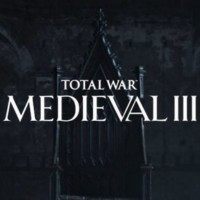
TBA
Strategy, Multiplayer, Singleplayer, The Middle Ages, Turn-based.
The next major installment in Creative Assembly's strategy game series. Total War: Medieval 3 is the third part in the Medieval sub-series and a sequel to Total War: Medieval II from 2006. A new engine named Warcore was used for this game and a Polish developer named Pawel Wojs was appointed project director.
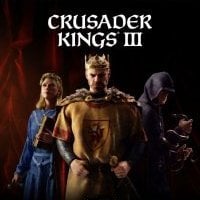
September 1, 2020
Strategy, Economic, Grand Strategy, Historical, Internet, Multiplayer, PS Plus Extra, PS Plus Premium, RTS, Sandbox, Singleplayer, War Strategy, The Middle Ages, Xbox Game Pass Premium, Xbox Game Pass Ultimate, PC Game Pass.
The third part of a series of strategy games developed by Paradox Interactive. In Crusader Kings III we are at the forefront of a medieval dynasty, which we control over the next generations, gradually increasing its influence. The title allows you to play both alone and in multiplayer mode.
Gamepressure
OpenCritic
Steam
Users
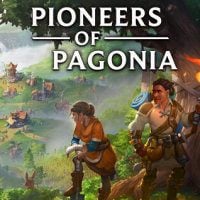
December 11, 2025
Strategy, City Builder, Economic, Indie Games, Internet, Co-op, Multiplayer, RTS, Singleplayer.
Pioneers of Pagonia is a strategy game co-developed by the designer of the first installment in The Settlers series. It revolves around expanding a community's economic might and uniting several tribes living in the titular archipelago.

September 20, 2024
Strategy, City Builder, Economic, Polish, Post-apocalypse, RTS, Singleplayer, Steampunk, Survival, Xbox Game Pass Premium, Xbox Game Pass Ultimate, PC Game Pass.
The sequel to a warmly-received economic strategy game by 11 bit studios. Frostpunk 2 is set thirty years after the first game. We play as the leader of a settlement trying to survive in a frozen world. This time we operate on a larger scale and rely on oil instead of coal.
Gamepressure
OpenCritic
Steam
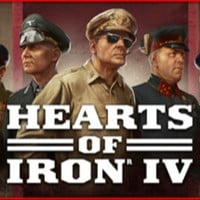
June 6, 2016
Strategy, Interwar Period, Economic, Grand Strategy, World War II, Internet, LAN, Multiplayer, RTS, Sandbox, Singleplayer, War Strategy.
The fourth major installment in a series of larg-scale strategy games, which originated in 2002 as a spin-off to the popular Europa Universalis series. Both franchises are consistently developed by Paradox Interactive. The game lets you take the lead of a country from the World War II period and beyond, specifically the years 1936-1948. Your responsibilities involve taking care of international relations and building alliances, but also developing the army, choosing the right strategy, and conducting the military operations. As it was in the previous editions of the series, the game combines faithfully recreated historical events (including authentic leaders, as well as military forces and technologies used by particular countries, along with the possibility of putting the history on a different course. As compared with the previous games, micromanagement was slightly reduced, and the focus shifted to larg-scale strategy. Other additions include the day and night cycle and changing seasons, as well as an option of grouping provinces into regions to facilitate management.
Gamepressure
OpenCritic
Steam
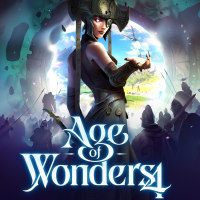
May 2, 2023
Strategy, 4X, Fantasy, Internet, Multiplayer, Singleplayer, Turn-based.
The fourth main installment of the fantasy turn-based strategy series by Triumph Studios, published by Paradox Interactive.
OpenCritic
Steam
Users
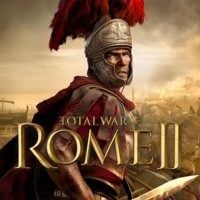
September 3, 2013
Strategy, Internet, Co-op, Multiplayer, RTS, Singleplayer, Ancient History, Ancient Rome, War Strategy, Turn-based.
A grand-scale strategy game developed by British studio Creative Assembly. Total War: Rome II lets players become leaders of the nations of antiquity from the Roman Empire period and struggle for dominance over new territories. Like the past Total War games (e.g. Total War: Shogun 2 and Empire: Total War) gameplay combines turn-based and real-time activities. Your task is to manage you provinces and command armies. The game’s highlight are the spectacular battles of armies fielding thousands of units. The developers of Total War: Rome II carefully kept to historical truth when it comes to battle formations, weaponry, and tactics. High-quality graphics was achieved thanks to a modified version of the Warscape Engine.
Steam
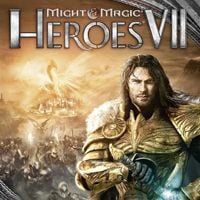
September 29, 2015
Strategy, Fantasy, Hotseat, Internet, LAN, Might & Magic, Multiplayer, For 2 Players, Singleplayer, Turn-based.
The seventh installment of one of the most popular turn-based fantasy strategy series dating back to 1995. It was created by the German studio Limbic Entertainment, whose portfolio includes the previous installment in the Heroes of Might & Magic series and Might & Magic X: Legacy. The story takes us to an empire torn by a civil war, in which young Prince Ivan created the Shadow Council composed of representatives from six different factions. The mechanics of the game are reminiscent of the earliest installments of the series and use a variety of solutions which were not implemented in the sixth part. The previously simplified economic model was improved, and the town screen was restored, together with all the characteristic features of individual factions. The maps are much larger and put greater emphasis on exploration; furthermore, the typical turn-based combat system has been slightly modified. During the battle we can use numerous machines and support units, including catapults, ballistas, and medical tents, and the battle arenas are filled with a larger number of various objects and obstacles.
OpenCritic
Steam
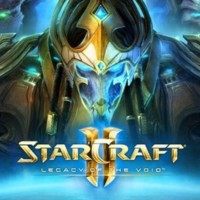
November 10, 2015
Strategy, Internet, Co-op, Multiplayer, RTS, Science Fiction, Singleplayer, Isometric View, Xbox Game Pass Ultimate, PC Game Pass.
The third chapter of StarCraft II trilogy that came out as a sequel to Blizzard’s bestselling science-fiction RTS. The last episode of the story is devoted to the most mysterious race in the StarCraft universe – the Protoss. You assume the role of the commander of this technically advanced faction, which went through significant evolution as compared with the first game released in 1998. The Protoss army is much more mobile, and individual representatives of the race are faster and gained a new ability - teleportation. In contrast with the other two factions, whose campaigns concentrated on battles, the chapter about the Protoss puts more emphasis on diplomacy, solving internal conflicts, and seeking compromises. Furthermore, the time that lapsed from the release of the previous episode was used to enhance the graphics and make several minor improvements to the gameplay mechanics.
OpenCritic

August 13, 2020
Strategy, Internet, Co-op, Greek Mythology, Multiplayer, RTS, Singleplayer, Ancient Greece, Ancient History, Turn-based.
The second spin-off of the Total War strategy cycle in which players can take part in a conflict known as the Trojan War. In Total War Saga: Troy we can lead the army of the title city or the Greek army attacking it. The game created by Creative Assembly studio features eight famous heroes, headed by Achilles and Ulysses.
OpenCritic
Steam
Users

February 5, 2016
Strategy, Dystopia, Internet, LAN, Multiplayer, PS Plus Extra, PS Plus Premium, Science Fiction, Singleplayer, Tactics, Turn-based, Isometric View.
A turn-based tactical strategy game set in a futuristic, science fiction universe and a sequel to XCOM: Enemy Unknown (2012). Both games were produced by the experienced developer, studio Firaxis Games, founded by Sid Meier, a legend of the video game industry. The story is set 20 years after the events of the last game. Despite their heroic efforts, human forces proved themselves helpless against the alien invaders, and the Blue Planet fell into their hands. However, the remnants of the XCOM organization are still active in the underground, and pick up guerilla tactics against the enemy in order to reclaim the planet. Gameplay mechanics reprises the solutions known from the previous game, featuring both the strategic layer – where you manage your mobile base and develop new technologies – and tactical, turn-based combat. The game features randomly generated maps, as well as improved combat and command system.
Gamepressure
Steam
Users

February 17, 2015
Strategy, Historical, Internet, Multiplayer, RTS, Singleplayer, Ancient History, Turn-based.
Another chapter in the Total War large-scale strategy game series, created and developed by the Creative Assembly studio. After a couple of sequels to the earlier installments in the series (e.g. Medieval, Shogun, and Rome), the developers took on a new great historical figure. The game is set in the late 4th and the early 5th century CE. The Roman Empire is on the brink of collapse, at war with numerous barbaric tribes of the Huns and the Visigoths. Playing as Rome, you lead an army weakened by continuous skirmishes. This makes gameplay much more demanding, challenging even for the veterans of the series. The game realistically presents various military, social, and religious tendencies of the period, e.g. you have to counteract diseases and epidemics and deal with climate changes that affect farming and economy. Additionally, both the UI and the game engine were improved, resulting in better visual quality.
OpenCritic
Steam
Users

October 24, 2023
Strategy, City Builder, Economic, PC Game Pass, Sandbox, Singleplayer, Xbox Game Pass Ultimate.
Cities: Skylines II is the second installment in a series of city builder economic strategies, developed by Colossal Order. Players must build and manage a city, creating districts, placing roads and setting taxes.
Gamepressure
OpenCritic
Steam
Users

February 23, 2010
Strategy, Napoleonic Era, Internet, LAN, Multiplayer, RTS, Singleplayer, War Strategy, Turn-based.
Another installment in a renowned series of spectacular strategy games developed by Creative Assembly since 2000. The game focuses on the character of Napoleon Bonaparte and his military conquests at the turn of the 19th century. The player observes his ups and downs during the Italian, the Egyptian, and the European story campaigns. Completing them allows the player to witness both the rise and the fall of his empire. When it comes to the gameplay mechanics, the game introduces only slight modifications. The game combines all the successful mechanics employed in Empire: Total War with a set of new features, such as the system of army provisions, ship repairs, further extension of diplomacy and the increased role of spies. During the battles, the generals (including Bonaparte himself) are of high relevance, as they are capable of punishing the soldiers and bolstering their spirit. Both the visuals and AI of the units were improved.
Steam
Users

May 16, 2006
Strategy, RPG Elements, Fantasy, Hotseat, Internet, LAN, Might & Magic, Multiplayer, Singleplayer, Turn-based.
The fifth installment of the popular fantasy turn-based strategy game series. To freshen up the franchise, the production of the game was entrusted to Nival Interactive, an experienced Russian developer, whose portfolio includes such games as Rages of Mages, Etherlords, Silent Storm, and Blitzkrieg. The game takes place in the land of Ashan and focuses on the war with hosts of demons, who, having killed the king, are ravaging the country. The fate of Ashan lies in the hands of heroes, who confront the forces of evil in order to defend their home factions. The new developer decided not to revolutionize the gameplay and instead focused on the strategic aspects and minor modifications of the game's mechanics; for example, the heroes no longer participate in battles, there are no separate town screens, time limits during combat have been added, and new diplomacy options are available. It is the first game in the series to feature a fully 3D environment.
Steam
Users
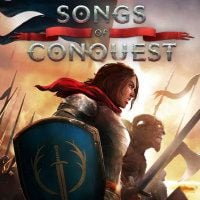
May 20, 2024
Strategy, RPG Elements, Fantasy, Hotseat, Indie Games, Internet, Multiplayer, For 2 Players, Singleplayer, Turn-based.
Songs of Conquest is a fantasy strategy enriched with RPG elements. The player must both manage the kingdom and lead the team as they explore the game world and perform their tasks. In addition, there are tactical battles and the whole game takes place in the turn-based system.
OpenCritic
Steam
Users
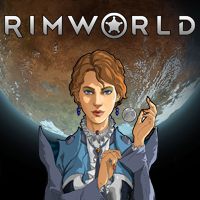
October 17, 2018
Strategy, 2D, Crowdfunding, Economic, Indie Games, RTS, Science Fiction, Singleplayer, Top-down.
A strategy game set in a science-fiction world in which we supervise an extraterrestrial colony. It has been developed by debuting independent studio Ludeon, established by a former employee of Irrational Games, who previously worked on the Bioshock series. The story of RimWorld takes place in a future in which humanity colonized many alien star systems, but they are located so far from each other that their inhabitants cannot count on anyone, but themselves. We take command over a small group of survivors of a colony space ship, with our task being to maintain the development and provide safety to our base. Aside from building structures and gathering food and resources we must assign each colonist with a task adequate to his or her skills. RimWorld features a unique complex tactical combat system and three independent AI systems that – depending on the situation – will generate random story arcs, making sure to maintain a proper level of drama throughout the gameplay.
OpenCritic
Steam
Users
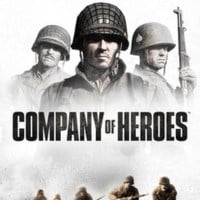
September 11, 2006
Strategy, World War II, Internet, LAN, Multiplayer, RTS, Singleplayer, War Strategy, Tactics.
A real-time strategy set during the World War II. The game was developed by the Canadian studio, Relic Entertainment, famous for the Homeworld series and Warhammer 40.000: Dawn of War. The game focuses on the American armies struggling against the enemy in Western Europe. It begins with the D-Day, the legendary allied landing in Normandy. The single-player campaign is very cinematic. When it comes to the multiplayer, it can support up to eight players. Each of them has to pick a side - either the Allies, or the Axis. The game stands out thanks to the Essence Engine and the popular Havok technology accompanying it. Thus the game world makes a great impression - the environments are destructible to a large degree and the team the player commands can boast great AI - its members take advantage of their surroundings and respond very quickly to enemy actions.
Steam
Users
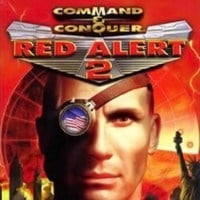
October 24, 2000
Strategy, Alternative History, EA Play, Internet, LAN, Multiplayer, RTS, Science Fiction, Singleplayer.
The official sequel to Command & Conquer: Red Alert, a game originally released on PCs in 1996 by the Westwood Studios company. The storyline of Red Alert 2 is a continuation of that of its predecessor, however, due to the results of the secret Soviet experiments, this time we will witness the emergence of several alternative reality scenarios. The players can once again declare themselves either for the side of the Allies or the advancing red tide of the Soviets, and it is their task to try to decide the fate of the world with the numerous new tools at their disposal. Said novelties include unique, futuristic military technologies, as well as the ability to deploy spies, who can reach even the most carefully guarded secrets of any enemy base. In total, the production features forty new single-player missions and thirty previously unavailable units and buildings. The visuals of C&C: Red Alert 2 have also been significantly upgraded to harness the full potential of newest computers and modern graphics cards.
Steam
Users
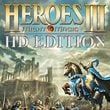
January 29, 2015
Strategy, 2D, RPG Elements, Fantasy, Hotseat, Internet, Might & Magic, Multiplayer, Remaster/remake, Singleplayer, Turn-based.
A remastered edition of one of the most well-received installments of the legendary Heroes of Might & Magic series, created for the 15th anniversary of the game's original release and the 20th anniversary of the franchise. It was commissioned by Ubisoft and developed by DotEmu, known e.g. from the remake of the cult platform game Another World. The contents of the HD edition are the same as the base game (no expansions included) and consist of 7 story campaigns (about 50 maps in total), a skirmish mode and a functional editor. Compared to the original, the key changes are the upgraded wide-screen-compatible HD visuals. The graphics are now sharper and more clear-cut, which is the result of reprogramming over 25,000 elements and models. The multiplayer mode has also been upgraded, both in the local “hotseat” mode and the online one. Also, for the first time ever, a version for mobile devices was created.
OpenCritic
Steam
Users
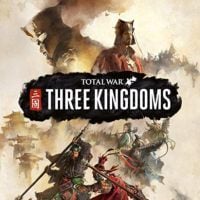
May 23, 2019
Strategy, China, Economic, Internet, Multiplayer, Romance of The Three Kingdoms, RTS, Singleplayer, Ancient History, War Strategy, Turn-based.
The twelfth main entry in the Total War series of strategy games. For the first time in history, it takes the players to the ancient China, to the times when the country was split into three rival kingdoms. The title combines traits of classic RTS and turn-based strategy game.
OpenCritic
Steam
Users

March 29, 2019
Strategy, City Builder, Economic, Internet, Multiplayer, PS Plus Extra, PS Plus Premium, RTS, Singleplayer, Cold War.
One of the installments in the economy strategy game series started in 2001 - Tropico. The game has been developed by Limbic Entertainment - the creators of Might & Magic X: Legacy and Might & Magic: Heroes VII. In Tropico 6, the player assumes the role of El Presidente - the leader of a banana republic. The objective is to manage the country by developing the cities, providing the citizens with jobs, fixing the damage caused by various natural disasters, as well as issuing decrees that shape both domestic and foreign policies. One of the novelties delivered by Tropico 6 is the fact that the action of the game no longer takes place on a single island - instead, the country is spread between multiple islands, all of which have to be managed by the player at the same time. The islands can be connected by bridges and tunnels. The game also features agents, who can be dispatched to various corners of the world to - not entirely legally - obtain blueprints for certain structures, such as the Statue of Liberty or the Eiffel Tower. Moreover, the developers decided to allow the players to modify the main palace and appear before the society. During a speech, a player can e.g. make populistic promises.
Steam
Users
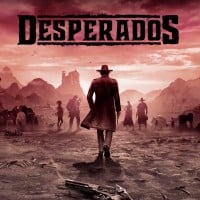
June 16, 2020
Strategy, PS Plus Extra, PS Plus Premium, RTS, Singleplayer, Stealth, Tactics, Western, 19th Century.
Desperados III is a tactical strategy game and a part of the popular series inspired by the Commandos franchise. The players are controlling a group of five specialists who complete various missions on the Wild West.
Gamepressure
OpenCritic
Steam
Users

December 7, 2022
Strategy, Economic, Space, RTS, Science Fiction, Singleplayer.
Economic strategy of a city builder type, in which we manage a huge space station. In Ixion we have to take care of the infrastructure, develop new technologies, as well as manage the population and face various problems.
OpenCritic
Users
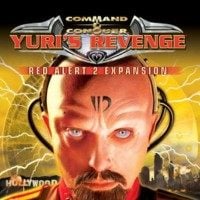
October 17, 2001
Strategy, Alternative History, Internet, LAN, Multiplayer, RTS, Science Fiction, Singleplayer.
The official expansion to Command & Conquer 2: Red Alert 2, the renowned RTS released in 2000 by the Westwood Studios company. The expansion pack, titled Yuri’s Revenge, expands the storyline of the vanilla version by adding an additional plot thread, in which Yuri – the advisor of the main antagonist of Red Alert 2 – is the lead character. Similarly to the previous installment of the production, the single player campaign has been divided into two separate parts (seven missions for each of the factions), allowing us to declare ourselves either for the Allied or the Soviet side of the conflict. The multiplayer mode has also been further developed with the addition of ten new scenarios and also an entirely new faction – the forces of Yuri. Furthermore, the title also features previously unavailable regions, such as Hollywood, London, Cairo or Transylvania; several unique buildings and units have also been added to the expansion, including the Virus sniper, the genetically modified Brute, the Boomer submarine, as well as the Slave Miner excavation vehicle. The developers have also prepared over an hour of HD cutscenes to further enhance our gameplay experience.
Users
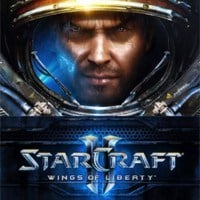
July 27, 2010
Strategy, Internet, Co-op, Multiplayer, RTS, Science Fiction, Singleplayer, Isometric View, Xbox Game Pass Ultimate, Free-to-play, PC Game Pass.
A sequel to a bestselling RTS game released by the Blizzard company in 1998. The story of the second game was split into three separate episodes; Wings of Liberty is the first installment in the trilogy, focusing on Terrans. In the game you meet an old acquaintance - Jim Raynor. Deemed a rebel, now he fights with Zerg forces, who seem to be interested in a mysterious artifact. He also encounters the powerful and mysterious race of Protoss. In comparison with the prequel, gameplay mechanics did not go through any drastic changes, allowing the authors to focus on new, upgraded visuals, multiplayer mode enhancements, and other minor modifications. Single player campaign allows the player to complete the available scenarios in any order and freely choose which technologies to develop. Furthermore, between the missions you can explore the world, talk to non-player characters, and use their services.

August 2, 2016
Strategy, 2D, Economic, Gangster, Indie Games, Police, Singleplayer.
An original strategy game with elements of adventure game developed by independent studio Weappy in cooperation with Team 17 Softworks. You take on the role of a chief of police who is about to retire. However, instead of safeguarding the law and order, he decides to use his authority and influence to make a fortune. To this end, the protagonist deals with the local representatives of criminal underground, while trying to keep his actions in the dark. This is the Police features two-layered gameplay, divided into plot and strategy. The former lets you follow the story of the main hero and build relations with key characters. The latter is about planning and execution of criminal operations, while carefully manipulating the actions of police. Moreover, you have to smartly manage your dirty money – safely laundering it for your private needs and investing some into upgrading the police forces.
Gamepressure
OpenCritic
Steam
Users
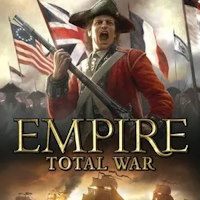
March 3, 2009
Strategy, Napoleonic Era, Internet, LAN, Multiplayer, RTS, Singleplayer, War Strategy, Turn-based, 18th Century.
The fifth installment in the popular strategy game series created by Creative Assembly in 2000. This new game is set in the 18th century, focusing on key events of the period, such as the American Civil War, the Industrial Revolution, and the rivalry over the Eastern trade routes. Although the core concept of the gameplay remains the same, the mechanics went through some major alterations, mainly due to the introduction of sea warfare. The game lets you command entire fleets as well as individual ships. Moreover, external factors, e.g. weather conditions, can affect sea battles. Additionally, the game offers improved advisers, as well as new options of trade, diplomacy, and espionage. Due to the widespread use of firearms in the period, new combat tactics have to be used. However, the key elements of the series, the turn-based strategic layer and large-scale battles, remained unchanged.
Steam
Users
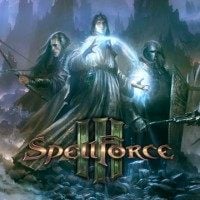
December 7, 2017
Strategy, RPG Elements, Fantasy, Internet, Multiplayer, RTS, Singleplayer.
The third installment in a fantasy game series launched in 2003, which combines elements of RTS and RPG. The title was produced by Grimlore Games, a studio founded by the series’ publisher, which employs some of creators of the first two SpellForce games. Story-wise, SpellForce 3 is a prequel to the previous titles. It is set in times, when this fantasy world was still a vast, unified continent. This obviously affected the structure of locations, which are no longer solitary islands connected by portals. In terms of gameplay mechanics, the developers used the well-proven solutions making up a strategy game, in which you build a base, recruit army, and fight battles. At the same time, the strategic gameplay is enriched with the addition of such elements as heroes of different classes and skills, a character progression system, and story-driven missions with subquests – like in a classic RPG. The game features also multiplayer gameplay available through the Spellforce.net online platform.
OpenCritic
Steam
Users

March 10, 2015
Strategy, City Builder, Economic, PC Game Pass, PS Plus Extra, PS Plus Premium, Sandbox, Singleplayer, Xbox Game Pass Premium, Xbox Game Pass Ultimate, Xbox Game Pass Essential.
An economic strategy game belonging to the popular genre of city builders. This one was created by the Finnish studio Colossal Order, creators of the Cities In Motion series. The game is a response to the popular SimCity franchise from Maxis Studios. In contrast to the previous titles from the Finns, this one is not limited to public transportation, letting you build up a whole virtual metropolis from scratch. The game is set on maps providing 36 square kilometers of terrain each, where you can build your dream city and take care of its inhabitants by raising new buildings and creating transportation network. Economic aspect is the crucial element to the game – while playing, you have to keep an eye on the city budget, provided by your citizens' taxes, and establish trade contacts with neighboring cities. You also develop means of public transportation to help your citizens get around the city faster. The game features high quality 3D graphics and full mod support.
Gamepressure
OpenCritic
Steam
Users

May 9, 2016
Strategy, 4X, Economic, Grand Strategy, Internet, Space, Multiplayer, PC Game Pass, PS Plus Extra, PS Plus Premium, RTS, Sandbox, Science Fiction, Singleplayer, Xbox Game Pass Premium, Xbox Game Pass Ultimate, Xbox Game Pass Essential.
A real-time space strategy with RPG elements developed by Paradox Interactive – the creators of such renowned series as Europa Universalis or Crusader Kings. The game is played in a procedurally generated interstellar space, where your job is to build a galactic empire. A the beginning of the game you choose one of the 7 playable races that differ in appearance, skills, and ethics. The game focuses on exploration and expansion, giving you the choice to subdue other species by force or ally with them, using an advanced diplomacy system. Either way, the nations unwilling to engage in peace talks will have to be persuaded on the battlefield, where battle-hardened fleets serve as your envoys. The title offers three independent technological trees, allowing you to focus on developing your civilization's society, engineering, or physics, depending on your preferences.
Gamepressure
OpenCritic
Steam
Users

August 30, 2022
Strategy, Formula 1, Manager, Cars, Singleplayer.
F1 Manager 2022 is a management strategy in which we lead a Formula 1 team, taking care of all aspects of its functioning. The game was developed and published by the British studio Frontier Developments, known for many economic strategies.
OpenCritic
Steam
Users
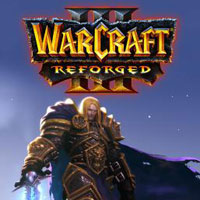
January 29, 2020
Strategy, Fantasy, Internet, Multiplayer, Remaster/remake, RTS, Singleplayer, Isometric View, Xbox Game Pass Ultimate, PC Game Pass.
A remastered version of Warcraft III from 2002, which is one of the most popular RTS games in history. The game includes not only the basic version of the original title but also its legendary expansion: The Frozen Throne. The remaster offers refreshed graphics, re-recorded character dialogs and a number of game fixes.
OpenCritic
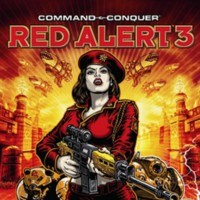
October 28, 2008
Strategy, Alternative History, EA Play, Games Workshop, Internet, Multiplayer, RTS, Science Fiction, Singleplayer.
After the success achieved by the third installment in the Command & Conquer series, EA Los Angeles began to work on a sequel to the Red Alert subseries developed in parallel with the franchise's main installments. Again, the players are thrown into an alternative reality, where the leaders of the Soviet Union decided to travel back in time in order to make Russia great again. However, apart from the Allied Forces, standing in their way this time is a new superpower established in the eastern part of the globe - the Empire of the Rising Sun. Each of the three entities involved in the conflict received its own story campaign consisting of 9 missions. Importantly, the campaigns can be played both in the singleplayer and co-op modes. Depending on the faction chosen, the player takes control of different, but also unusual, combat units falling into three categories: ground, air and naval ones. Among them, the player will find floating islands, transformable tanks or armed animals, such as dolphins or bears for example. Command & Conquer: Red Alert 3 once again utilizes the SAGE engine, providing the players with high-quality visuals.
Steam
Users

September 14, 2023
Strategy, 4X, Internet, Books, Multiplayer, RTS, Science Fiction, Singleplayer.
Dune: Spice Wars is an RTS with 4X elements, set in the universe created by Frank Herbert. It was developed by Shiro Games, the creators of the warmly welcomed Northgard.
OpenCritic
Steam
Users
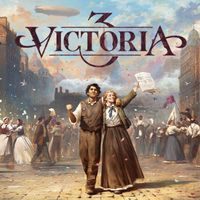
October 25, 2022
Strategy, Economic, Grand Strategy, Internet, Multiplayer, RTS, Singleplayer, 19th Century.
The third installment of the cult historical strategy series by Paradox Interactive studio. Victoria 3 takes the player to the 19th century during the colonial era. The player's task is to lead one of many available countries to greatness.
OpenCritic
Steam
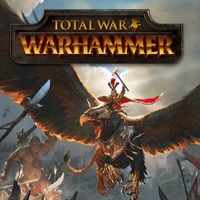
May 24, 2016
Strategy, Fantasy, Internet, Multiplayer, RTS, Singleplayer, War Strategy, Turn-based, Warhammer.
Next installment in the epic strategy game series, introduced by Creative Assembly in 2000. After a series of titles set in different historical periods, the developers decided to take players into one of the most famous fantasy universes, created by the Games Workshop company. In the dark universe of Warhammer, different races constantly fight for power and world domination, unaware of the fact that the real threat comes from a mighty force from the north. The game lets become the leader of one of several races, including humans, orcs, goblins, dwarves, vampires, and others. Disregarding the fantasy elements, the gameplay does not differ significantly from the previous games in the series, with epic real-time battles lying at its core. Between the battles the gameplay switches to a turn-based mode, where on a world map you develop your country, its economy, and establish diplomatic relations with other nations.
Gamepressure
OpenCritic
Steam
Users